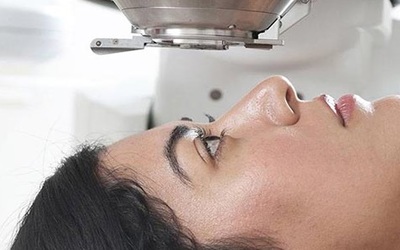LASIK or laser assisted in situ keratomileusis is the most commonly performed laser eye surgery to treat refractive errors such as myopia(nearsightedness), hyperopia(farsightedness) and astigmatism.
[the_ad id=”6084″]
It identifies and rectifies every minute defect in the cornea to give a perfect vision sans corrective lenses. The LASIK surgery, executed with the aid of excimer laser is a minimally invasive and pain-free procedure which takes only 15 minutes for execution. The main aim of the LASIK surgery is to provide sharper and clearer vision.
How is LASIK performed?
The entire procedure is performed under 15 minutes for both eyes and results in improved vision without the use of glasses or contact lenses. Since the surgery is performed with the help of a laser, it is a painless procedure. The doctors use numbing eye drops to desensitize the eyes so that the patient is comfortable during the surgery. The patient is positioned under the laser where an instrument called lid speculum is used to keep the eyes open. The doctor marks the position of the cornea with an ink marker before beginning the surgery.
The first step in LASIK Surgery is to create a thin circular flap in the cornea. This is done with the help of an automated surgical tool known as microkeratome. The flap is then pulled back to gain access to the underlying cornea. Some corneal tissue is removed using an ultraviolet light beam called excimer laser. For nearsighted patients, the cornea is flattened while for the farsighted patients the cornea is reshaped at a steeper angle. After the cornea is modified, the flap is placed into its original position, allowing the cornea to heal naturally.
What are the chances of Success?
The success rate of LASIK eye surgery is extremely high and most people are eligible for this procedure. Patients with large pupils or very thin corneas might not be eligible for this surgery. Those patients, who indulge in contact sports and suffer blows to the face, are often deemed ineligible for LASIK. The patients that have been cleared for this procedure must undergo a complete study of the surgery and select a qualified doctor with adequate experience to perform the surgery. The patients must ensure that the doctor uses state of the art equipment and latest technology during the process of the surgery.
What are the risks involved?
As with any surgery, there are potential risks and complications that may arise during the process of LASIK. Some patients complain of dry eyes after the procedure, while sometimes there may be under corrections or over corrections. Under corrections can be resolved by redoing the procedure. However, over corrections might be tricky to handle. The ophthalmologist will have to discuss these risks with the patient prior to the procedure. At this time, the patient must reveal all relevant medical history to the doctor. Pre and post operative care instructions should be given to the patient to ensure faster recovery.
While performing any medical procedure, the patient and doctor should always be alert. The Doctor must involve the patient as much as possible and the patient must follow the doctor’s advice as closely as possible for best results.

